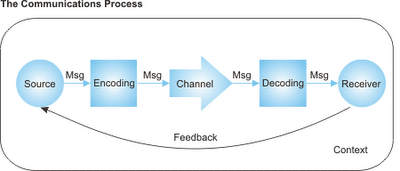INSTRUCTIONS:
This paper consists of FOUR questions. You will be given 5 minutes to read through the questions in this paper. The examiner will then read to you an extract from a piece of communication. You will be given 20 minutes to respond in writing to the questions. The extract will be read twice. You will be allowed to make notes while you listen to the extract.
Write down these questions on Havana & proceed to the clip:
1. State the MAIN idea of the extract in ONE sentence of no more than 20 words. (3 marks)
2. Identify FOUR details about Havana which support the claim that 'the years have taken toll on its architectural riches'. (4 marks)
3a. Identify TWO literary devices used in this extract. (2 marks)
3b. Give ONE example of EACH literary device you have identified in 3a. (2 marks)
4. State FOUR details of the physical setting presented in this extract. (4 marks)
A. CONTRAST
The two widely differing elements are contrasted using a common value to convey further information about one or both elements. The differences between them often intensify either their positive or negative qualities. They frequently will be opposites. For example the warmth of the Caribbean with the cold winter of the United States (comparison point temperature). Contrasts also can be metaphorical.
B. IRONY
Irony is the contrast between what is expected or what appears to be and what actually is. For example, ‘A clumsy ballet dancer.’
Verbal Irony (sarcasm is the tone of voice/writing)
The contrast between what is said and what is actually meant. For example, He did an excellent job of making a mess.
Irony of Situation
This refers to a happening that is the opposite of what is expected or intended. For Example: The wedding of a son causes a marital breakdown for the parents.
C. DEVICES OF COMPARISON
METAPHOR
Compares by stating the element is the item of comparison e.g. The lawyer’s claws were out and he would not stop until they drew blood,
ANALOGY
Extends a metaphor to compare a situation or particularly to explain a complex item by using a familiar item to structure the explanation. E.g. Exam preparation is like baking a cake all the ingredients must be used and preparations thorough before baking. Firstly the ingredients: study which is lightened with periods of recreation, physical health, managing stress. (The analogy would continue for several paragraphs even)
SIMILE
Compares two unlike objects using like, as, resembles, looked as though etc. e.g. His exam worries even after the event were as if a rat was gnawing at his brain.
B. IRONY
Irony is the contrast between what is expected or what appears to be and what actually is. For example, ‘A clumsy ballet dancer.’
Verbal Irony (sarcasm is the tone of voice/writing)
The contrast between what is said and what is actually meant. For example, He did an excellent job of making a mess.
Irony of Situation
This refers to a happening that is the opposite of what is expected or intended. For Example: The wedding of a son causes a marital breakdown for the parents.
C. DEVICES OF COMPARISON
METAPHOR
Compares by stating the element is the item of comparison e.g. The lawyer’s claws were out and he would not stop until they drew blood,
ANALOGY
Extends a metaphor to compare a situation or particularly to explain a complex item by using a familiar item to structure the explanation. E.g. Exam preparation is like baking a cake all the ingredients must be used and preparations thorough before baking. Firstly the ingredients: study which is lightened with periods of recreation, physical health, managing stress. (The analogy would continue for several paragraphs even)
SIMILE
Compares two unlike objects using like, as, resembles, looked as though etc. e.g. His exam worries even after the event were as if a rat was gnawing at his brain.
PERSONIFICATION
Compares non-human, inanimate elements OR abstract concepts to using HUMAN qualities e.g. The building stared down at him daring him to enter OR Justice is never kindly but it is ruthlessly fair. If the qualities are not human then the comparison is a metaphor e.g. A beast of a car.
ALLUSION
Making reference to familiar classical, biblical, historical or other well known cultural events. For example: Writers often allude to Anansi-like cunning.
D. DEVICES OF EMPHASIS
HYPERBOLE
Exaggerates qualities of an element or an overstatement (sometimes for comedic effect). For Example: I am so hungry I could eat a cow.
REPETITION
Uses repetition of either words, phrases or even a whole sentence. For Example: What if I do not make it, what if I cannot pass, what if I fail?
DEVICES USING SOUND
Alliteration – The repetition of initial consonant sounds –barely blowing by
Assonance – The repetition of similar vowel sounds- grows below grounds
Onomatopoeia - the word sounds like the sound- the hooting of the owls, the drip of water.
Compares non-human, inanimate elements OR abstract concepts to using HUMAN qualities e.g. The building stared down at him daring him to enter OR Justice is never kindly but it is ruthlessly fair. If the qualities are not human then the comparison is a metaphor e.g. A beast of a car.
ALLUSION
Making reference to familiar classical, biblical, historical or other well known cultural events. For example: Writers often allude to Anansi-like cunning.
D. DEVICES OF EMPHASIS
HYPERBOLE
Exaggerates qualities of an element or an overstatement (sometimes for comedic effect). For Example: I am so hungry I could eat a cow.
REPETITION
Uses repetition of either words, phrases or even a whole sentence. For Example: What if I do not make it, what if I cannot pass, what if I fail?
DEVICES USING SOUND
Alliteration – The repetition of initial consonant sounds –barely blowing by
Assonance – The repetition of similar vowel sounds- grows below grounds
Onomatopoeia - the word sounds like the sound- the hooting of the owls, the drip of water.

